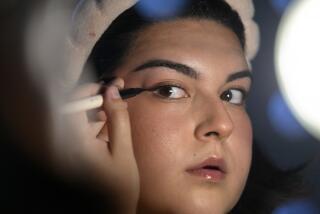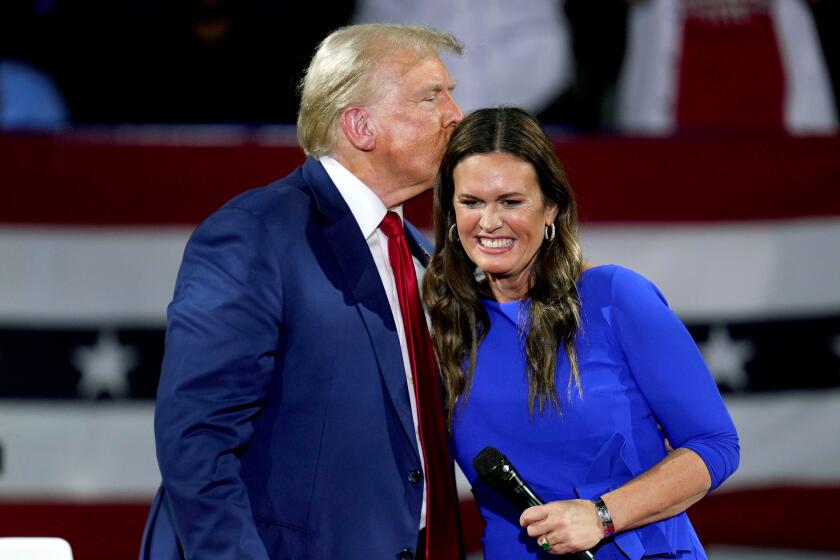Perspective: Pinterest is all pictures but maybe too much product
At last count, there were 273 people following me on Pinterest — a visual bookmarking site that lets you “pin” and share images of things you deem worthy of sharing — your lunch, say, or a cute bunny. Mind you, I have never actually pinned anything there, which raises the question: If you pin something in a forest and nobody is there to see it, does it make a sound?
Much worse than this, however, was my disappointment when I realized that the site had nothing whatsoever to do with Harold Pinter. “What about the pregnant pauses?” I inquired of one of my graphic design students recently. “How can it be Pinteresque if there’s no angst?” There do seem to be lots of cute bunnies, however.
I was quickly disabused of the notion that Pinterest had anything to do with being Pinteresque, but on closer inspection, I’m not so sure. Halting dialogue! Unspoken nuance! Uncertain identity!
“I feel quite overwhelmed,” Harold Pinter once wrote. “I had no idea.”
Nor did I. Pinterest claims to have more than 2 million active users, and it’s easy to see why: It combines the verbal brevity of Twitter with the visual bounty of Etsy, and you don’t have to actually buy anything. At the same time, there’s a surreptitious element of commerce here (eye candy being what it is) that’s rather addictive. Given the degree to which the boundary between looking and buying is separated by a single click, linking a board to a store, for example, is a fairly easy task. For sole practitioners who personally sell their own wares (again, Etsy springs to mind), it’s even easier.
The basic premise is a simple one, requiring little in the way of time, effort or for that matter innovation. Pinterest takes its cue from the popularity of social media sites like Facebook, which share a certain fundamental ideology with scrapbookers and diarists, all of whom hope, on some level, to cement their presence in an ever-moving world. I came, I saw, I conquered. I was there. I bore witness. I pinned!
Initially curious when another student mentioned the site to me back in summer 2010, I joined, somewhat reflexively, hoping for a new kind of visual narrative — storyboarding, perhaps, or an online graphic novel? Perhaps I imagined it would evolve like an exquisite corpse, collaborative and unpredictable, a sort of impromptu visual dialogue. I asked some of my design students whether any of this is in evidence, and while some claim to be using it (more for its functionality than inspiration) most seem to think there isn’t anything particularly collaborative about the site.
“If anything, it promotes a type of empty competitiveness among users,” observed one of my grad students. Another was even more skeptical. “These days, I’m sort of craving finite visual adventures — like, reading a magazine and when I’m done, it’s done,” she noted. “The endless possibilities of clicking and clicking on sites like Pinterest is disheartening to me sometimes.”
Among my own little pool of grad school respondents, the biggest complaint by far seems to be Pinterest’s lack of selective privacy. Given the social media framework — which is to say that entire communities of like-minded people follow one another — it’s impossible to compartmentalize your boards. One student planning on getting married next summer uses the site to organize her wedding ideas but wishes they weren’t so visible to, say, her classmates and her faculty.
That said, Pinterest has benefited from a strategy that initially engaged a kind of youthful visual exuberance, and that meant recruiting designers and artists and photographers when they launched in 2010. Back in those comparatively early days — when a tweet was an ornithological term — the staccato pattern of picture-posting seemed more an offshoot of snap-happy photographers (a practice sometimes called “firehosing”) than a new form of visual expression. Come to think of it, maybe it still does.
The elephant in the room here is an ethical one, because the line between seeing and selling — or pinning and purchasing — is so uncertain and indeed, embryonic. From a retail perspective, it’s perhaps an ideal situation: Think passive window shopping meets persuasive personal engagement. On the other hand, for those adhering to the old-school traditions in which the roles of advertising and editorial are intended to function in parallel but separate worlds, the boundaries are murky. Is Pinterest a repository for aesthetic pleasure or a pop-up mall? Is it a stronghold for creative inspiration or a boomtown for visual entrepreneurs? Is it a sentimental scrapbook or a shopaholic’s paradise? One thing is becoming clear: For those who view pinning as a promotional conceit, it’s a slam dunk.
In the end, Pinterest, like Facebook, thrives by externalizing things — a picture here, a product there — raising the question: If a picture’s worth a thousand words, does posting it online make it more enduring, less ephemeral? Pinterest would like us to think so.
Of course, why you’d want to share all these things is another matter, which brings me to my final question: Are we meant to assume, in following the boards of others, that our lives will be enhanced in some vital, essential way? Should we assume too that what’s getting pinned is the best of what’s out there — that others have done the editing for us, so that we can get right to the core of what’s good, better, best? And who is to say what you think is best is what I’ll think is best?
Perhaps that explains why more than 2 million people are pinning all those pictures: After all, nature does abhor a vacuum. “If you only have one of something,” wrote Harold Pinter, “you can’t say it’s the best of anything.” A Pinteresque notion, indeed.
Helfand, a designer and writer, is senior critic at Yale University School of Art and a founding editor of Design Observer. She wrote “Scrapbooks: An American History” (Yale University Press, 2008).
More to Read
The biggest entertainment stories
Get our big stories about Hollywood, film, television, music, arts, culture and more right in your inbox as soon as they publish.
You may occasionally receive promotional content from the Los Angeles Times.










